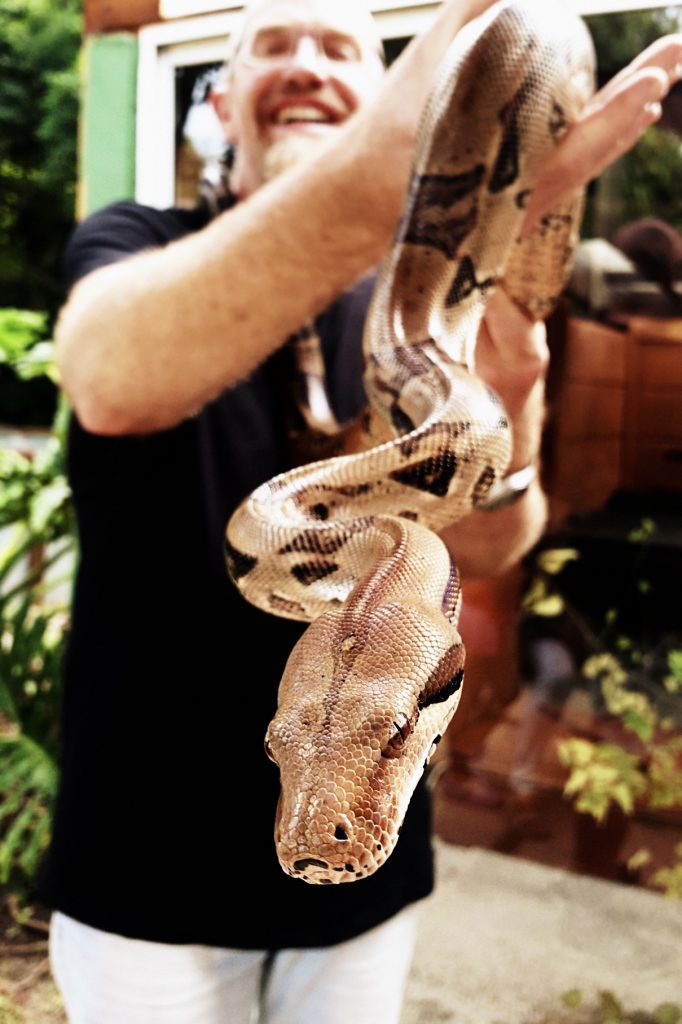The South Florida Water Management District has decided to include itself in the fight against the state's large population of Burmese pythons. Along with python challenges and other similar events, CNN reports the organization selected 25 hunters from about 1,000 applicants who hunt and euthanize the invasive snakes. The two-month pilot program has a $175,000 price tag and will end June 1.
South Florida Water Management District's program isn't one of a kind, but it is the latest to attempt solving the Everglades' problem. The goal is simple: Kill as many pythons as you can. The program pays $8.10 an hour for up to 8 hours. Snakes measuring 4 feet include an additional $50 and each foot afters add a $25 bonus. Hunters roam the high-grassed Everglades with a stick, a knife and typically handguns.
The fight against the Burmese pythons in the Florida Everglades has been well publicized. This recent story is only one among a series of stories spanning — literally — years. Given the persistent threat of the invasive pythons, a review of its impact on wildlife and the ecosystem is helpful in understanding the cause-and-effect.
Are Burmese Pythons Causing Severe Declines in Other Wildlife Species?
A study dating back to 2012 led by herpetologist Michael Dorcas and colleagues conducted nighttime studies of live and dead animals on roads between 2003 and 2011, National Geographic reported. These gatherings were used to estimate how many animals were in certain areas. The data was then compared to population numbers collected during similar studies in 1996 and 1997.
Findings from the former surveys documented mammals like rabbits, red fox, gray fox, Virginia opossums, raccoons and whitetail deer in the Everglades, National Geographic reports. The recent survey, however, revealed “severe declines” in mammal sightings over its 25,400 miles of covered road.
What’s classified as a “severe decline,” you ask? The study reports raccoon observations dropped by 99.3 percent, opossums by 98.9 percent and bobcats by 87.5 percent. Scientists didn’t see any rabbits or fox during the entire survey.
Burmese pythons’ appetite has also ranged to larger animals, from alligators to deer. Though the study didn’t document those findings, photos regular circle the internet of massive snakes with a full belly of a larger mammal. And with smaller mammals being wiped out, the endangered Florida panther could be next.
“It’s not unreasonable to assume that a really large python could consume a Florida panther,” Dorcas told National Geographic. The snakes grow as large as 20 feet in length and are known to eat leopards in Southeast Asia.
Related: Top 10 Venomous Snakes in North America

This 16-foot Burmese python was captured and killed in the Everglades after eating a 76-pound deer in 2011. (Credit: Huffington Post)
What’s the Long-Term Impact?
More than the potential extinction of certain small mammals in the Everglades, the long-term impact in the area is unknown. Dorcas explained to National Geographic that pythons eating raccoons has in turn resulted in less turtle eggs being eaten by the raccoon population. He told the publication the Everglades “may be knee-deep in turtles in 20 years.”

Many owners of Burmese pythons find it's too much trouble, so they release the snake into the wild. (Credit: iStock)
Whit Gibbons, professor emeritus of ecology and head of outreach for the Savannah River Ecology Lab at the University of Georgia, wasn’t involved in the study, but he told National Geographic he doesn’t believe the effects will be as impactful as an extinction in the Everglades.
“My bet is that some of the mammals that have been affected will partially recover by managing to adapt or adjust,” he said, adding mammals won’t bounce back to their previous levels.
Where are Pythons Coming From?
The New York Times reports Burmese pythons first entered North America through the pet trade in the 1970s. At least 2 million constrictor snakes — including boas, anacondas and pythons — have been imported since as part of a market for exotic species of snakes. The NYT reports Miami was the hub for this traffic.
The Burmese python is not a good pet. They typical grow as small as 8 feet and average around 12 feet. The list of reasons keeping a 12-foot snake isn’t an option is long. The response for most owners solve is releasing the snakes. Ultimately, that’s how more and more Burmese pythons are finding the Everglades. Walter E. Meshaka Jr., supervisory curator for national parks in southern Florida for the National Park Service from 1995 to 2000, says estimates are as high as 100,000 Burmese pythons being in the Everglades.
Featured image: iStock






